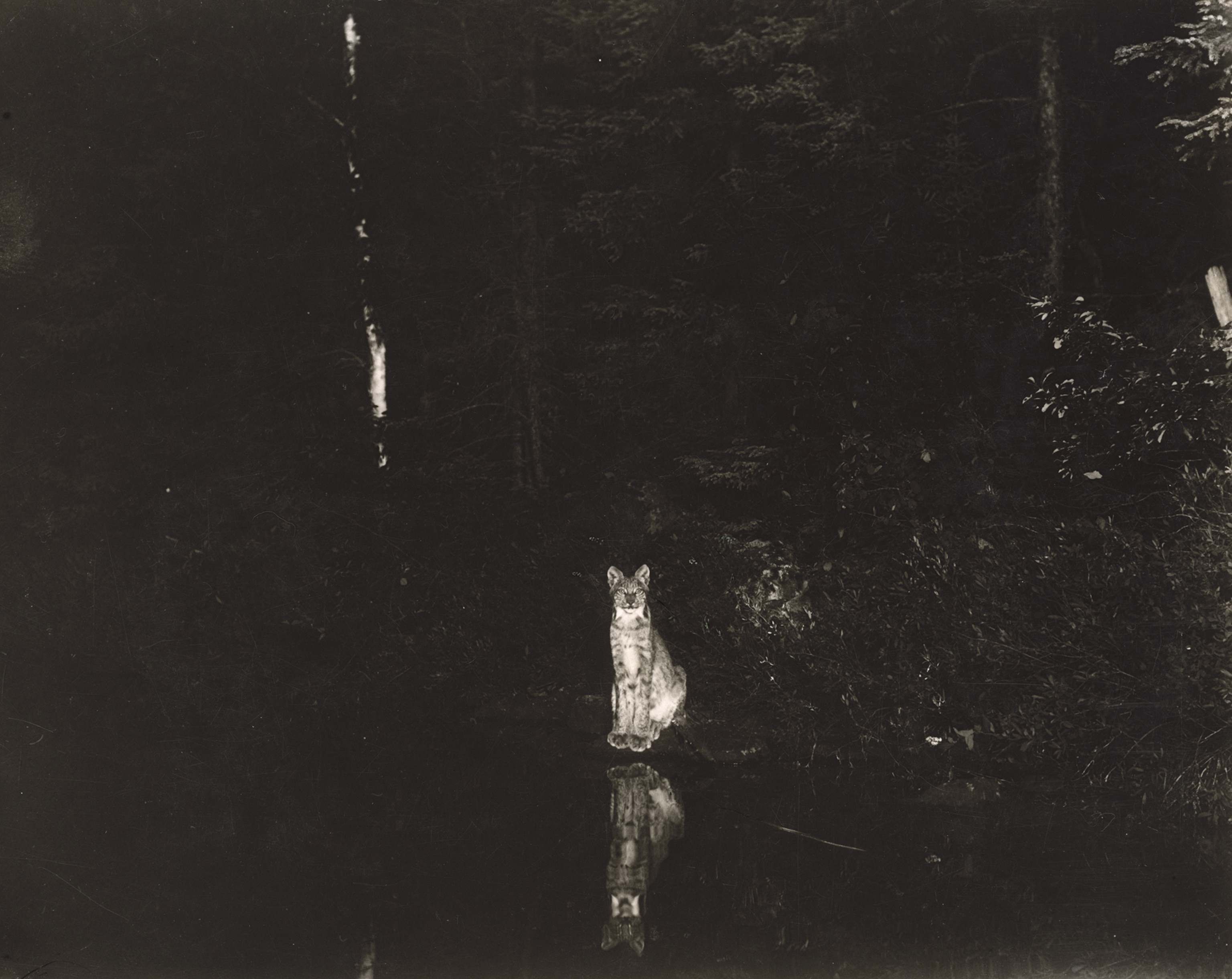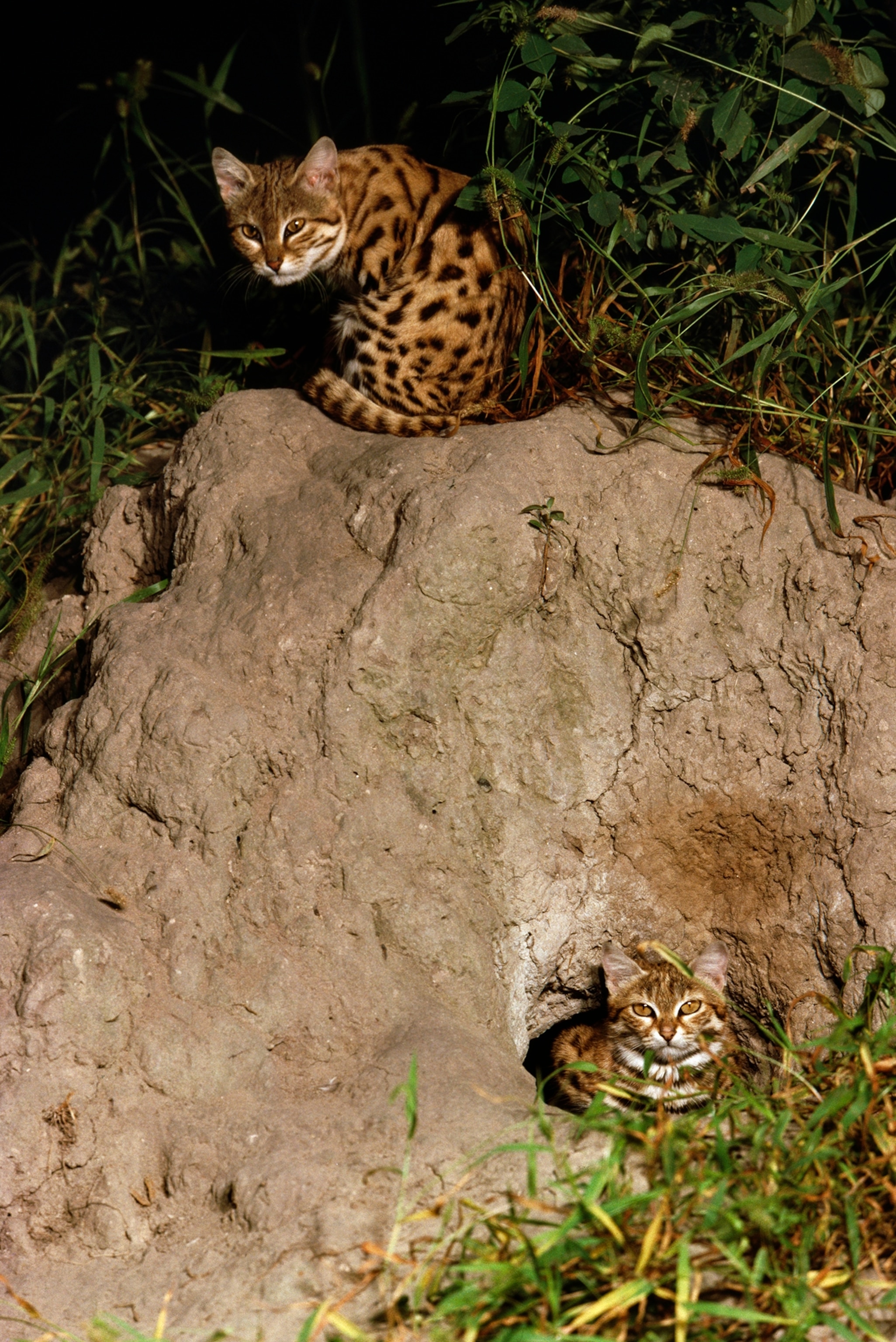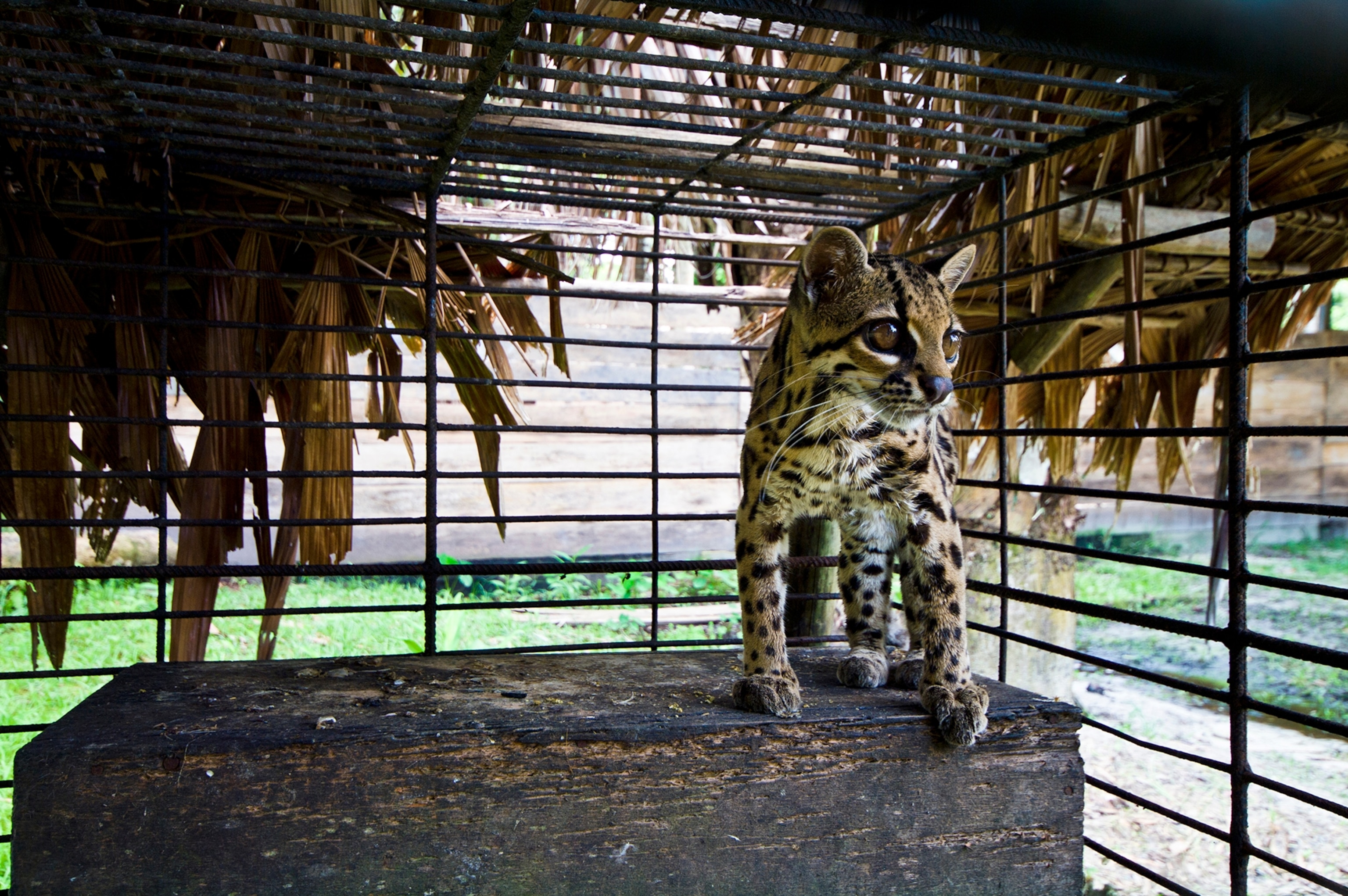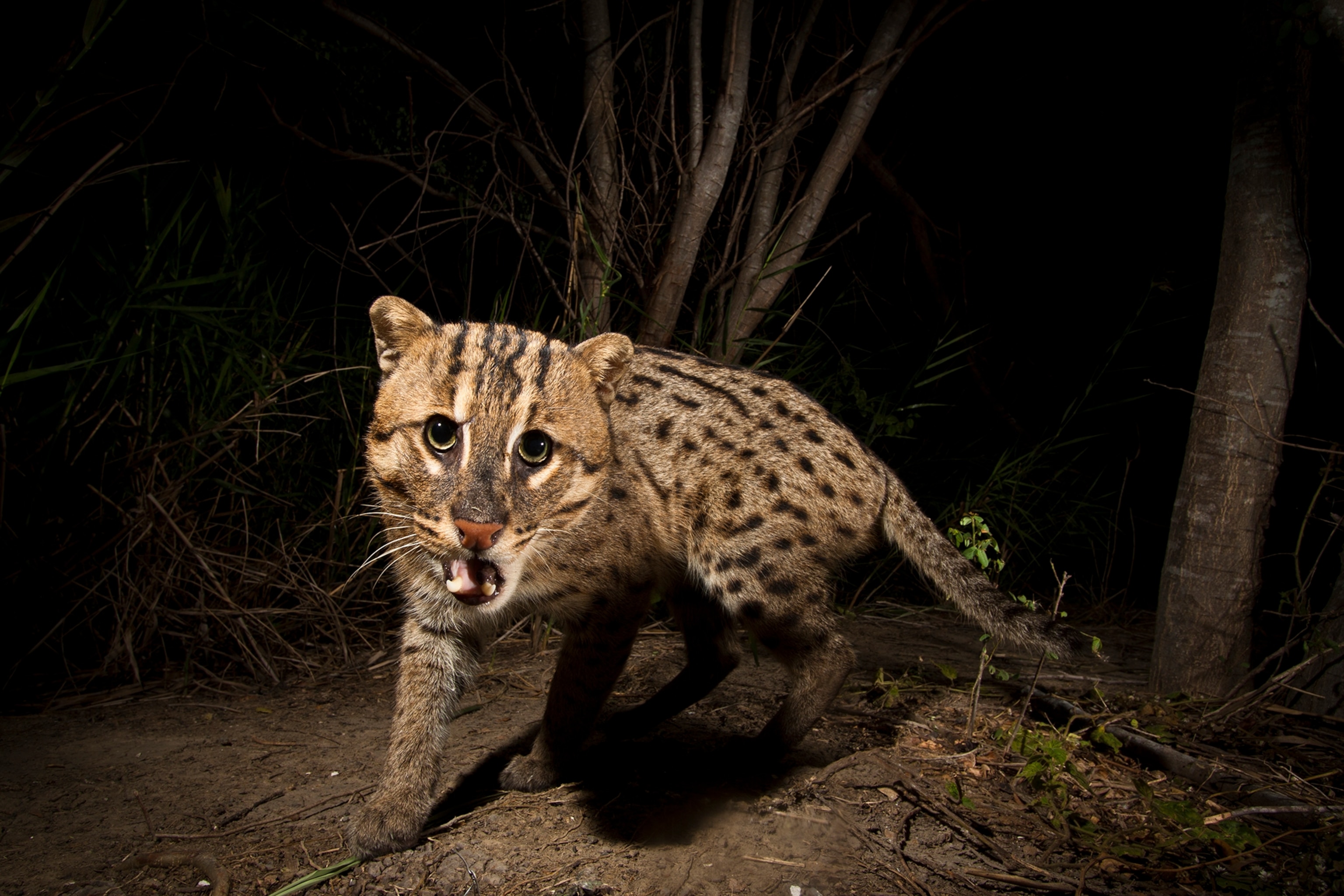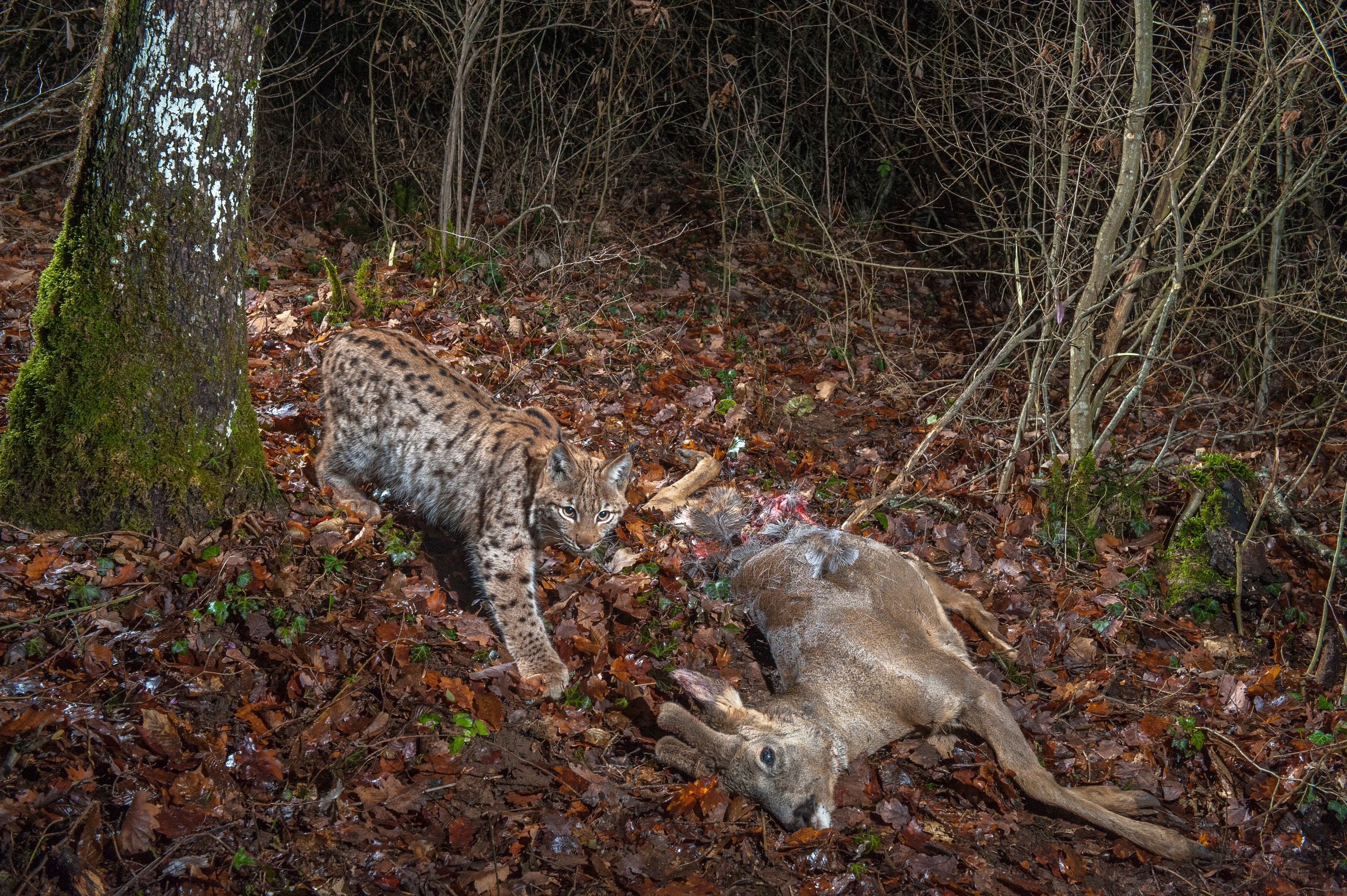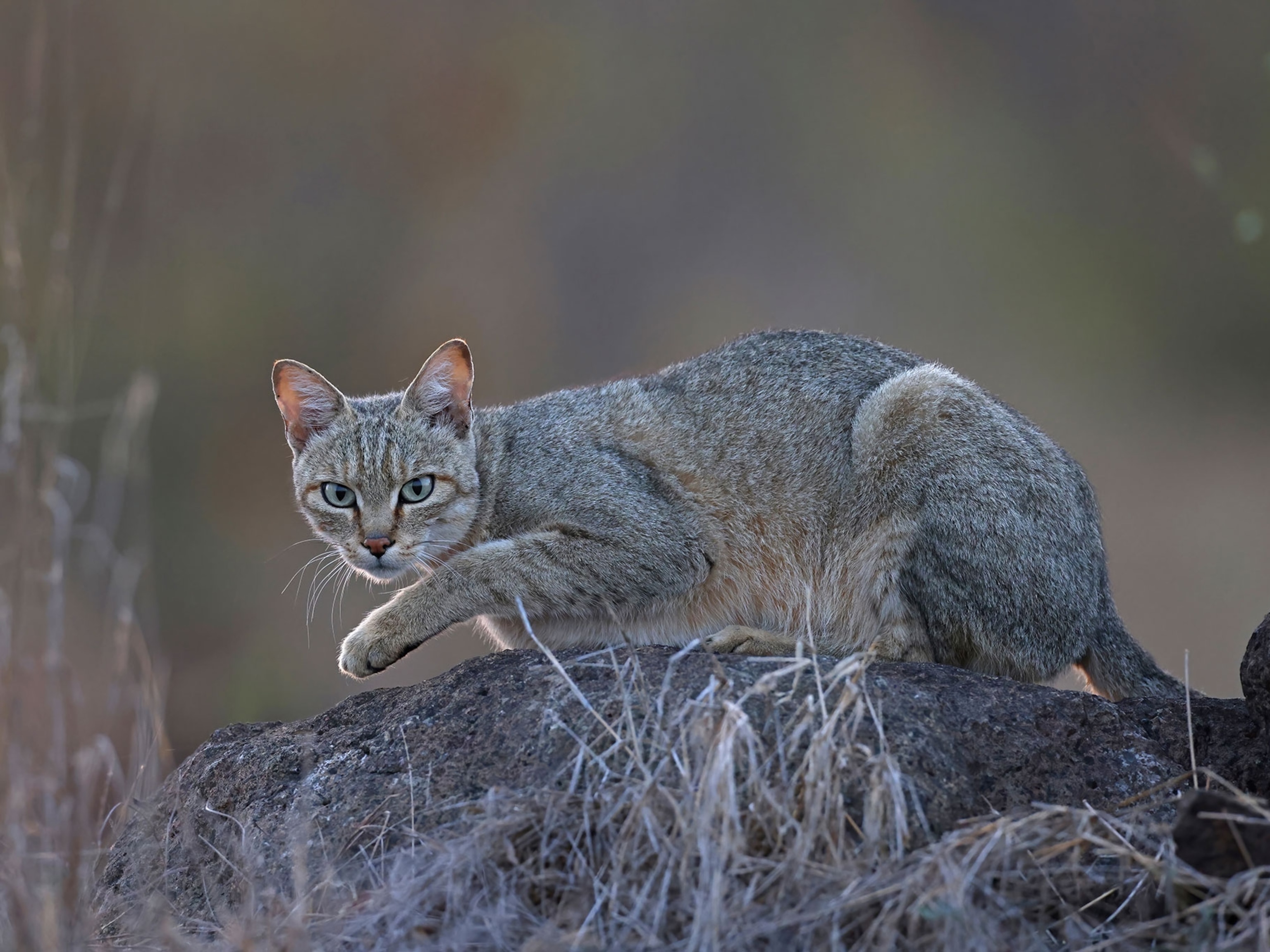
House cat ancestors' remains found in Polish caves—2,000 miles from home
The discovery of 7,000-year-old remains of the Near Eastern wildcat in Europe adds a new wrinkle to the cat's evolutionary story.
When early Neolithic farmers set off from the Fertile Crescent some 7,000 years ago, they brought their newly domesticated animals, such as goats, sheep, cattle, and dogs. But they likely didn’t realize a sneaky hitchhiker, the Near Eastern wildcat, was coming along, too.
When the migrants reached Poland about 6,000 years ago and started converting forests into open pastures and agricultural fields, the rodents and the wildcats—an ancestor of our domestic cat—settled right in. That’s the conclusion of a new study, which found the first known skeletal remains of Near Eastern wildcats in four Polish caves near early farming settlements.
“It was so unexpected,” says study leader Magdalena Krajcarz, an archaeozoologist at Nicolaus Copernicus University in Torun, Poland. One notable discovery was a cat’s humerus—a long leg bone—embedded in a layer of sediments with ceramic vessels.
It’s uncertain if the cat actually had a relationship with a person, Krajcarz says—Neolithic peoples occasionally visited caves, and a predator probably carried the bone into one. But the feline’s presence suggests it was comfortable living alongside, if not exactly with, humans—an important step on the road to becoming fully domesticated, says Krajcarz. (Read more about little-known small wildcats.)
All modern domestic cats are descendants of the Near Eastern wildcat, which was first domesticated in the Near East about 10,000 years ago. Now, the discovery of the Near Eastern wildcat in Europe could add new wrinkles to the story, according to the paper, published July 13 in the Proceedings of the National Academy of Sciences.
For instance, the scientists also unearthed bones of four European wildcats, a native relative of the Near Eastern wildcat, in the same caves. That means the Near Eastern wildcats must have encountered a distant relative when they reached their new home (the two species shared a last common ancestor about 200,000 years ago).
This brings up many intriguing questions, says Krajcarz, such as whether the two felines competed with each other for prey, or even hybridized. If that were the case, it could mean our pet cats have a more complex evolutionary past than we imagined.
Clues in the bones
To find out more about the two cats’ relationship, the scientists investigated what they both were eating by analyzing the isotopes—or different chemical forms—of nitrogen in the cats’ bones.
Other studies have shown that Neolithic peoples used manure to fertilize their crops; this was indicated by an elevated nitrogen signal in their bones as well as the bones of their dogs and livestock. The Near Eastern wildcats, however, had a lower nitrogen concentration in their bones, a sign that these “cats had a pretty loose relationship with humans” and certainly weren’t dependent on them for food, Claudio Ottoni, a paleogeneticist at Sapienza University of Rome, said by email. (Learn surprising things you never knew about your cat.)
Instead, the cats likely ate rodents that that lived in the farmers’ fields, possibly including the Near Eastern house mice as well as local native species, such as voles and wood mice.
An analysis of the European wildcats’ bones revealed a similar pattern, meaning that they, too, took advantage of the prey in the farmers’ fields and granaries. But the analysis also showed that the European wildcats shifted their diet from the small forest creatures they had previously eaten to wild, migratory birds (such as thrushes), which likely were attracted to the new, open agricultural fields.
“So, the two wildcats did not directly compete,” Krajcarz says. “They could co-exist” in this new habitat, and very likely hybridized. Future genetic studies may reveal the extent of their hybridization—and whether the addition of this European wildcats’ genes affected how the Near Eastern wildcat evolved into the house cat.
For instance, the European genes may have prevented Near Eastern cats in this part of Europe from becoming fully domesticated for a longer period of time. That would make sense, since the bones of actual house cats don’t show up in Poland until A.D. 200. Today, house cats and European wildcats still hybridize, which is a threat to the wild species’ genetic health.
Ottoni, who wasn’t involved in the research, praised the study for analyzing the diets of the ancient cats. “It represents a significant advance” in our knowledge of house cat evolution, he says.
Tracing the journey to our couch
Archaeologists suspect that Near Eastern wildcats—which are a little larger than but nearly identical in shape to modern house cats—first slunk out of the desert to take advantage of an easier meal: house mice scurrying through farms of the Fertile Crescent.
They were commensals, or animals that exploit the resources of others—such as stored food or trash—while doing their best to avoid a closer relationship. “Wolves and pigs are thought to have started down the domestication path in a similar way,” Krajcarz says. (Read how house cats domesticated themselves.)
People likely tolerated the fluffy carnivores and may have appreciated their self-imposed job of keeping the rodent population in check, eventually allowing them into their homes.
The oldest known domestic cat burial (a grave 9,500 years old) was found in 2004 on the island of Cyprus, about 43 miles south of mainland Turkey. Alongside the eight-month-old cat were decorative artifacts, including seashells and polished stones, and the remains of a 30-year-old person (whose sex is not known)—perhaps, the cat’s owner. Since there are no native wildcats on Cyprus, some scientists think sailors brought the felines to the island about 10,000 years ago.
There are still many questions surrounding the genetic and lifestyle changes that transformed wildcats into domestic cats. For instance: Did they disperse around the planet on oceangoing ships, or did they slowly journey on foot from settlement to settlement?
Krajcarz hopes that future genetic analyses will one day reveal the complete path of the wildcat from desert to agricultural field to the warmth of our hearths—and hearts.
